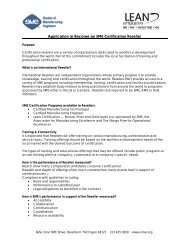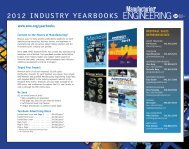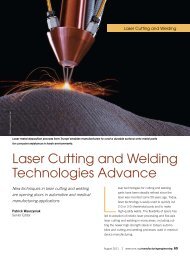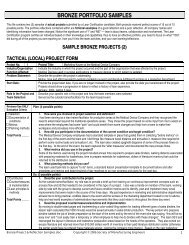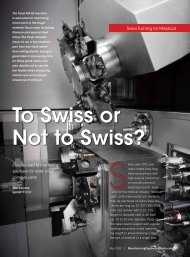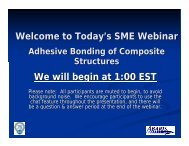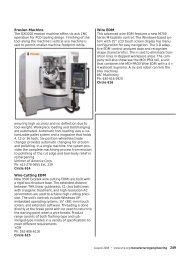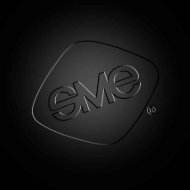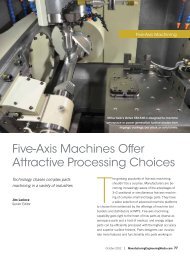Buckypaper: - Society of Manufacturing Engineers
Buckypaper: - Society of Manufacturing Engineers
Buckypaper: - Society of Manufacturing Engineers
- No tags were found...
Create successful ePaper yourself
Turn your PDF publications into a flip-book with our unique Google optimized e-Paper software.
Aerospace MaterialsThey can watch the tiniest particles come alive under ascanning electron microscope that has 100,000 times moremagnification than what is found in a high school laboratory.And strong composite materials that once seemed impossibleto cut, researchers and students are easily slicingaway thanks to a powerful abrasive waterjet machine. HPMIhas been successfully using an Omax 55100 JetMachiningCenter for the past six years to quickly and accurately cut awide variety <strong>of</strong> components, some lessthan a quarter <strong>of</strong> an inch in size.“We don’t always needthe more expensive singlewallnanotubes to get theproperties we want.”“The composite materials we workwith are really strong, and I can’t think<strong>of</strong> a material we haven’t cut on theOmax,” said Jerry Horne, an HPMIengineer who cuts materials for studentsand researchers. “It doesn’t matter howstrong the material is because the Omaxwill cut through anything.” The machineis designed to accommodate the cutting<strong>of</strong> large, complex parts and can handlesheet materials <strong>of</strong> up to 5 × 10' (1.524× 3.048 m) in dimension. Furthermore,its user-friendly controls simplify theprogramming <strong>of</strong> traditionally complextechniques. In fact, Horne can machinestudent components directly from aCAD drawing or DXF file.Getting CloserThe era <strong>of</strong> buckypaper use inproduction is getting closer, insist thescientists and engineers at HPMI. Accordingto Frank Allen, HPMI operationsdirector, the facility was producingbuckypaper at the size <strong>of</strong> a quarter backwhen he joined the institute in 2001,and now it is making much larger sheetsusing a batch production process.Eleven years ago, the price <strong>of</strong> thebest quality single-walled nanotubeswas approximately $500 a gram. Today,96 <strong>Manufacturing</strong>EngineeringMedia.com | March 2013





